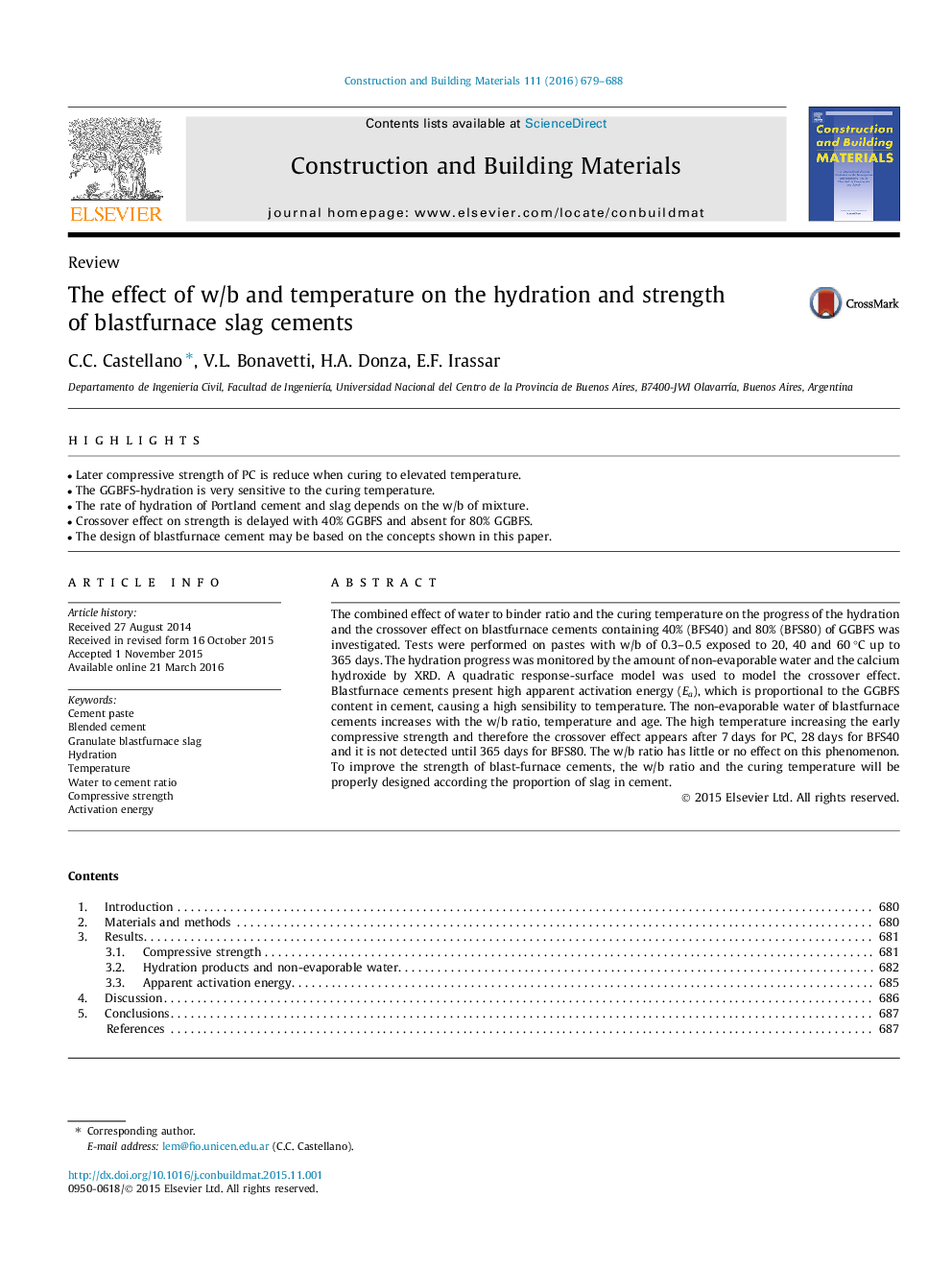| Article ID | Journal | Published Year | Pages | File Type |
|---|---|---|---|---|
| 6719031 | Construction and Building Materials | 2016 | 10 Pages |
Abstract
The combined effect of water to binder ratio and the curing temperature on the progress of the hydration and the crossover effect on blastfurnace cements containing 40% (BFS40) and 80% (BFS80) of GGBFS was investigated. Tests were performed on pastes with w/b of 0.3-0.5 exposed to 20, 40 and 60 °C up to 365 days. The hydration progress was monitored by the amount of non-evaporable water and the calcium hydroxide by XRD. A quadratic response-surface model was used to model the crossover effect. Blastfurnace cements present high apparent activation energy (Ea), which is proportional to the GGBFS content in cement, causing a high sensibility to temperature. The non-evaporable water of blastfurnace cements increases with the w/b ratio, temperature and age. The high temperature increasing the early compressive strength and therefore the crossover effect appears after 7 days for PC, 28 days for BFS40 and it is not detected until 365 days for BFS80. The w/b ratio has little or no effect on this phenomenon. To improve the strength of blast-furnace cements, the w/b ratio and the curing temperature will be properly designed according the proportion of slag in cement.
Keywords
Related Topics
Physical Sciences and Engineering
Engineering
Civil and Structural Engineering
Authors
C.C. Castellano, V.L. Bonavetti, H.A. Donza, E.F. Irassar,
